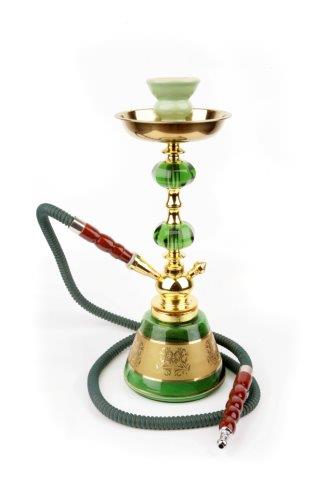EMBARGOED FOR RELEASE | September 08, 2013
Toward understanding the health effects of waterpipe or ‘hookah’ smoking
Note to journalists: Please report that this research was presented at a meeting of the American Chemical Society.
A press conference on this topic will be held Sunday, Sept. 8, at 10 a.m. in the ACS Press Center, Room 211, in the Indiana Convention Center. Reporters can attend in person or access live audio and video of the event and ask questions at www.ustream.tv/channel/acslive.
lNDIANAPOLIS, Sept. 8, 2013 — With water pipes or hookahs gaining popularity in the United States and other countries, scientists today described a step toward establishing the health risks of what has been termed “the first new tobacco trend of the 21st century.”
In a study that they said provides no support for the popular notion that hookahs are safer than cigarettes, they reported that hookah tobacco and smoke contain lower levels of four toxic metals than cigarette tobacco and smoke. It was part of the 246th National Meeting & Exposition of the American Chemical Society (ACS), the world’s largest scientific society, being held here this week.
“Any form of smoking is dangerous, and our studies on toxic metals in hookah smoke are taking the first steps toward the necessary animal and human studies that will establish a clearer picture of the relative dangers of hookah and cigarette smoking,” said Joseph Caruso, Ph.D., who led the study. “It is very difficult to compare hookah smoking with cigarette smoking because they are done so differently.”
He explained that water pipes use specially prepared tobacco, sometimes called shisha — a moist, gooey concoction that may include molasses, honey and flavoring agents. Burning embers or charcoal heat the shisha, producing smoke that bubbles down through a container of water and into a long hose-like tube with a mouthpiece for inhaling.
Caruso and colleagues, who are with the University of Cincinnati, think that the lower levels of arsenic, lead, cadmium and chromium they detected in hookah smoke are not due to filtering of the smoke through water. That’s part of the basis for the popular belief — disputed by the U.S. Centers for Disease Control and Prevention, the American Lung Association and other authorities — that hookah smoking is safer than cigarettes. Rather, it seems that shisha itself may contain lower levels of those metals, since Caruso’s team did not detect excess amounts of those metals in the hookah water.
Other differences in hookah vs. cigarette smoking complicate any interpretation of the health implications of the lower levels of toxic metals in hookah smoke, noted Caruso and graduate student Ryan Saadawi, who presented on the research at the meeting.
Studies have shown, for instance, that a typical hour-long hookah smoking session involves 200 puffs, while an average cigarette is 20 puffs. The World Health Organization estimates that an hour-long hookah session is equivalent to smoking 5-10 packs of cigarettes. However, many people who smoke shisha smoke less frequently than cigarette smokers.
“All of these things make hookah smoking different from cigarette smoking, and it also makes it difficult to compare the two, which is partly the reason why there are so few studies on the topic,” said Saadawi.
Caruso and Saadawi studied unsmoked shisha, as well as shisha smoke, with a sensitive instrument called an inductively coupled plasma mass spectrometer. They also removed the additives from the shisha and found little difference before and after, thus the tobacco is the likely source of the metals, they said. Whether the smoke went through the water in the hookah also didn’t affect the metal levels.
The scientists acknowledged funding from the University of Cincinnati. Saadawi has a fellowship from the Saudi Arabian Cultural Mission. An abstract of the presentation appears below.
To automatically receive news releases from the American Chemical Society, contact newsroom@acs.org.
# # #
The American Chemical Society is a nonprofit organization chartered by the U.S. Congress. With more than 163,000 members, ACS is the world's largest scientific society and a global leader in providing access to chemistry-related research through its multiple databases, peer-reviewed journals and scientific conferences. Its main offices are in Washington, D.C., and Columbus, Ohio.
Media Contact
During the national meeting, Sept. 6-11, the contacts can be reached at 317-262-5907.
Michael Bernstein
m_bernstein@acs.org
202-872-6042
Michael Woods
m_woods@acs.org
202-872-6293






